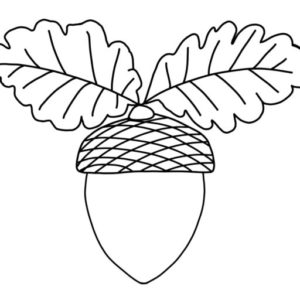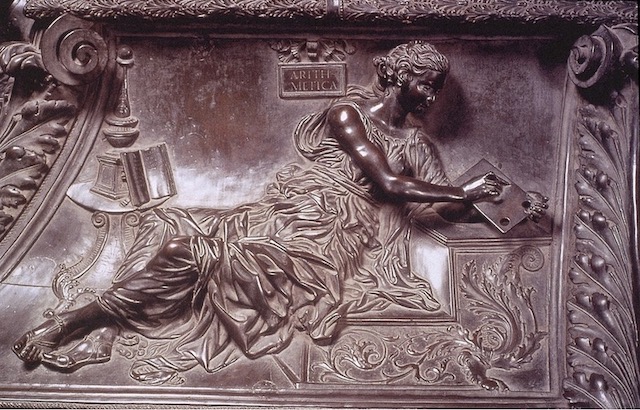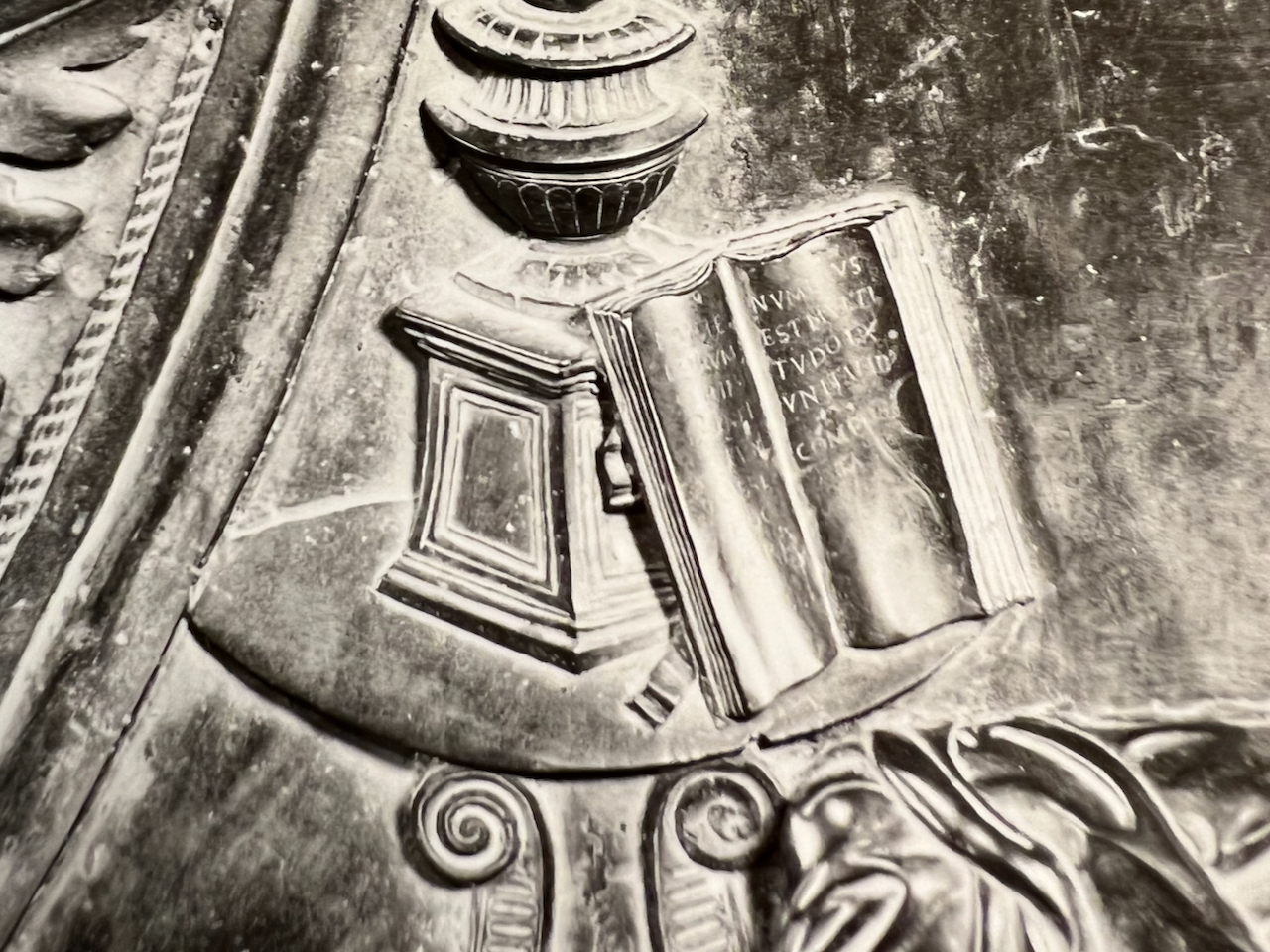Arithmetic
On the top left, across from her sister Geometry, is Arithmetic (figure 33), shown counting on a tablet. Her body twists to work on this tablet, as half of her body is sitting on the desk while her torso twists a quarter of the way over to work on her tablet. Her figure becomes serpentine-esque, twisting to show multiple facets of her body and displaying Pollaiuolo’s ability to represent her from many perspectives, evocative of his earlier print, Battle of the Nudes (c.1465-1475). On the left table is an inscription (figure 34) that reads “The sequence of numbers can be continued indefinitely” while the other page states “A number is a multitude composed from units.”[90] Ettlinger argued that these are both from Euclid, with the first page being implied and the second recorded verbatim from Euclid’s writings.
Capella further evokes the writings of Euclid in his written presentation of Arithmetic. Dressed in a robe that “concealed the operating ways of universal nature,” Arithmetic was described with “strange manifestations on her head” which were determined to be rays emanating from her brow.[91] These rays carried numbers that have many symbolic associations, both in the discipline of Arithmetic but also in the larger Christian tradition. In this section, Capella introduced the importance of Pythagorean theories regarding symbolic numbers such as the monad, representing Jupiter or the beginning of all, the dyad which generates matter, the triad which is the first odd number and therefore perfect, a representation of ideal forms. This led to the importance of the number seven as it relates to the sum of the masculine three and feminine four found in the arts of the Trivium and Quadrivium.[92] However, it is also important to note that the number ten or the decad “must be respected above all numbers” as it relates to God.[93] The symbolic numerology is primarily connected to three, four, and ten as these are the groupings found throughout the tomb. While Capella’s analysis of the numeric symbology relates to the overall tomb, within the panel of Arithmetic, Alain de Lille wrote that Arithmetic had one hand supporting the table of Pythagoras while the other showed contests, drawing ranks of numbers, battle, attacks, and insurgent numbers.[94] The table is likely shown in her hands as she works on the tablet, potentially working out the table. Overall, the figure of Arithmetic, similar to the figure of Geometry is posed in such a way that directs the viewer to the central panel, allowing for each figure to engage with one another, conveying the interplay within the disciplines through the overarching study of mathematics.
Figure 33. Antonio Pollaiuolo, Tomb of Sixtus IV, Detail of Arithmetic, c.1484-1493
Figure 34. Antonio Pollaiuolo, Tomb of Sixtus IV, Detail of Arithmetic Inscription, c.1484-1493


